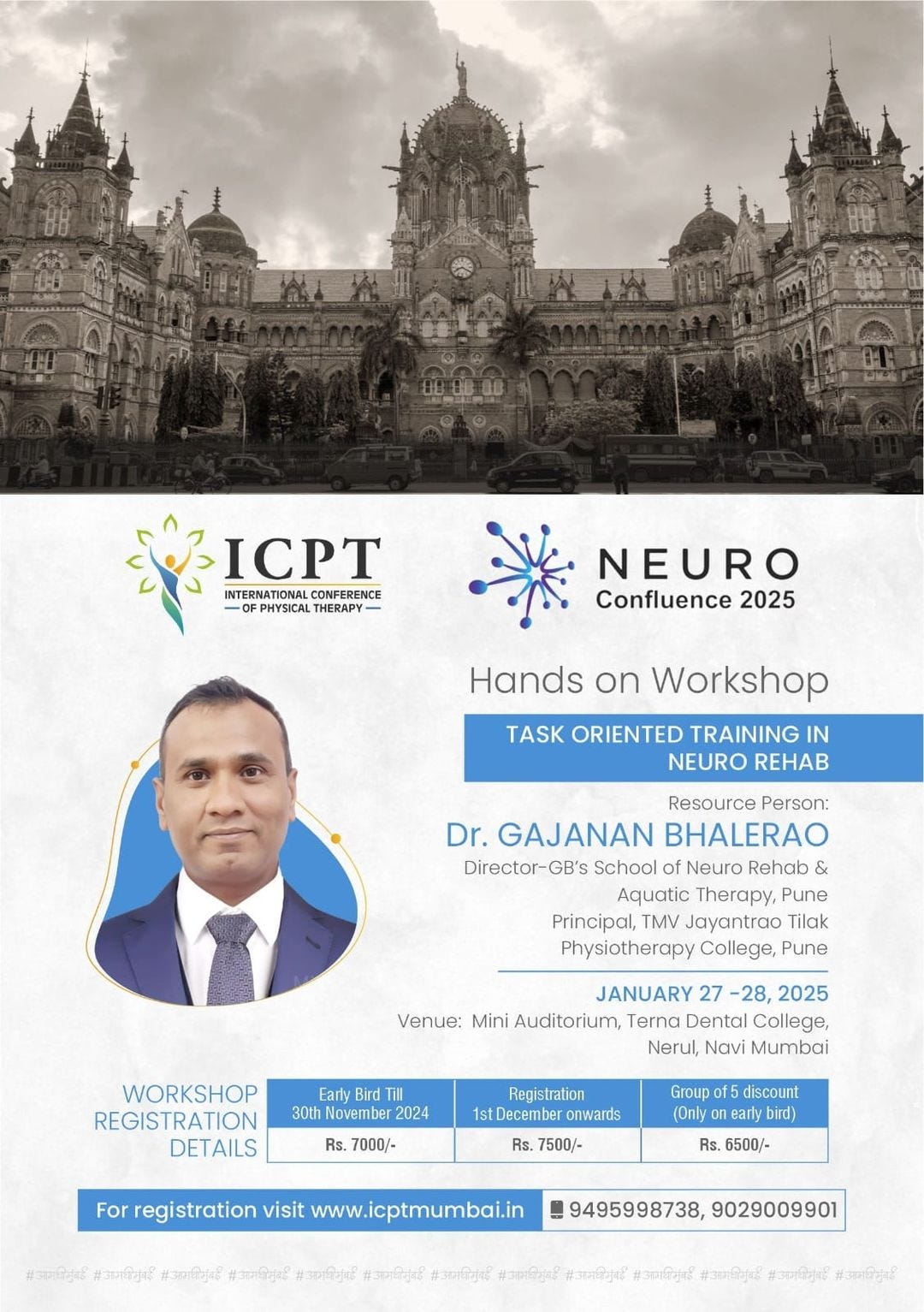Celebrating 50th Issue: 12 Fitness Myths Busted and Dusted!
Physiotherapy Post | Vol. 2, Issue 50 | November 2024
Hey Physiotherapy Post Community! 🎉
We’re over the moon to be celebrating the BIG 5-0 with Physiotherapy Post! Yes, it’s our 50th issue, and we’re giving ourselves (and YOU!) a huge high-five for being a part of this awesome journey!
What started as a simple idea has grown into a 50,000-strong community of physios, fitness fanatics, and wellness warriors – all committed to staying ahead of the game. Together, we’ve covered it all: insider tips on top treatment techniques of various conditions of musculoskeletal, neurological, cardio, sports, pediatrics, geriatrics and the list goes on… game-changing advancements of the treatment techniques, experts advice straight from the field, and must-know event updates to keep you inspired and in the loop.
This issue isn’t just another update; it’s a celebration of YOU! Each one of you makes Physiotherapy Post what it is. So grab a cuppa, dive in, and join us as we turn this 50th edition into a physio party that’s just getting started.
Here’s to many more exciting, inspiring, and downright issues to come! Thank you for being with us every step of the way! 🥳✨
Today we are discussing on the topic: 12 Fitness Myths Busted and Dusted!
Cheers,
The Physiotherapy Post Team
Exciting News Alert: PhysiotherapyCareers.com is Here!!
Calling all physiotherapy pros – your career just got a major upgrade! 🎉 We're thrilled to announce the official launch of PhysiotherapyCareers.com – the ultimate job portal exclusively for physiotherapy professionals! 🌍 Whether you're a seasoned expert, a fresh grad, or looking to take your physio career global, we’ve got you covered.
Say goodbye to endless job searches and hello to a world of tailored opportunities, all in one place! With listings from top healthcare facilities, clinics, and sports organizations worldwide, PhysiotherapyCareers.com is here to connect you with your dream role. 🌟
📝 What’s Inside?
Job listings for every physio level – from interns to department heads
Global opportunities for those who want to take their expertise anywhere in the world 🌎
Exclusive tips and resources to boost your career and keep you moving forward
So what are you waiting for? Dive into PhysiotherapyCareers.com and let your career reach new heights! 🚀
Link: www.physiotherapycareers.com
12 Fitness Myths Busted and Dusted!
In the world of fitness, myths and misconceptions are as common as dumbbells in a gym. From spot reduction fantasies to the belief that cardio is the ultimate fat-burner, these myths often lead us down unproductive or even harmful paths. But with science and research evolving, it’s time to clear the air and focus on what truly works.
In this article, we’re tackling 12 of the biggest fitness myths head-on. With each myth, we’ll dig into the science that debunks it, giving you clear and reliable information to guide your fitness journey. Whether you’re new to working out or a seasoned fitness enthusiast, this list will help you stay on track, avoid common pitfalls, and get the most out of every workout. Let’s dive in and get those myths busted and dusted!
1. Myth: "Spot Reduction Works to Target Fat in Specific Areas"
Reality: Unfortunately, spot reduction – the idea that you can lose fat in a specific area by working out that part of your body – is a myth. Research in the Journal of Strength and Conditioning Research shows that targeted exercises, like crunches for belly fat, don't reduce fat in specific areas. Instead, fat loss happens across the whole body when you create a calorie deficit.
2. Myth: "Lifting Weights Will Make You Bulky"
Reality: Many people, especially women, avoid lifting weights for fear of getting "too bulky." However, building significant muscle mass requires a combination of high-intensity training, a specific diet, and often, a genetic predisposition. Studies from the National Strength and Conditioning Association reveal that moderate weightlifting actually promotes lean muscle growth and helps with fat loss, creating a toned rather than bulky look.
3. Myth: "Cardio is the Only Way to Burn Fat"
Reality: While cardio exercises can help burn calories, they’re not the only path to fat loss. Research from Harvard Medical School suggests that combining cardio with strength training is more effective, as strength training increases muscle mass, which boosts resting metabolic rate – meaning you burn more calories, even at rest.
4. Myth: "The More You Sweat, the More You Burn"
Reality: Sweat is simply a sign that your body is cooling down; it’s not an indicator of calorie burn. Journal of Applied Physiology explains that sweat levels vary by factors such as temperature, humidity, and individual physiology. Calorie burn is more accurately tracked through heart rate and intensity, not sweat.
5. Myth: "Crunches are the Key to a Flat Stomach"
Reality: Crunches help build abdominal muscles, but they don’t reduce belly fat. A study published in the Strength and Conditioning Journal confirmed that spot training doesn’t lead to fat loss in targeted areas. To achieve a lean midsection, focus on a balanced routine that includes cardio, strength training, and a healthy diet.
6. Myth: "You Should Work Out Every Day to Get Results"
Reality: Recovery is essential for muscle repair and growth. Research in the American Journal of Sports Medicine shows that rest days are crucial to prevent overtraining, reduce the risk of injury, and optimize performance. Aim for 3-5 days of exercise per week, with rest or active recovery in between.
7. Myth: "No Pain, No Gain"
Reality: While some muscle soreness is normal, pain isn’t a requirement for progress. The Journal of Athletic Training points out that pain can signal strain or injury, not necessarily muscle growth. Effective workouts can be challenging without causing pain, so listen to your body and avoid pushing to the point of pain.
8. Myth: "Stretching Prevents Injuries"
Reality: While flexibility is beneficial, stretching alone doesn’t prevent injuries. Research in the British Journal of Sports Medicine reveals that a dynamic warm-up (like light jogging or mobility exercises) is more effective in preparing the muscles and reducing the risk of injuries than static stretching.
9. Myth: "High Reps for Toning, Low Reps for Bulking"
Reality: The “toning” versus “bulking” distinction doesn’t hold up scientifically. Studies in Sports Medicine show that both low- and high-rep workouts can increase strength and lean muscle mass. Whether you do 8 reps or 15, muscle tone and definition result from a combination of muscle growth and fat reduction.
10. Myth: "Protein Shakes Are Essential After Every Workout"
Reality: While protein is vital for muscle repair, you don’t necessarily need a shake immediately after every workout. Research published in the Journal of the International Society of Sports Nutrition indicates that as long as you meet daily protein needs (0.6 to 0.9 grams per pound of body weight), the exact timing is less critical.
11. Myth: "Morning Workouts are Superior to Evening Workouts"
Reality: The best time to work out is when you feel most energized and can be consistent. Studies in the Journal of Physiology suggest that while morning workouts might boost metabolism, evening workouts can improve performance, as body temperature is higher later in the day. Find what works best for your schedule and stick to it.
12. Myth: "More Exercise Always Means Better Health"
Reality: Too much exercise can lead to burnout and negatively impact health. Research in the Mayo Clinic Proceedings shows that excessive exercise can put stress on the heart and joints. Balance and moderation are key – aim for a mix of cardio, strength, and rest for optimal health benefits.
News update:
1. How to know if your child is deficient in these 5 essential vitamins
Read more at: Link
2. Scientist treated her own cancer with viruses she grew in the lab; Know all about the treatment
Read more at: Link
3. New guidelines for treatment of Type 2 diabetes from International Diabetes Federation soon
Read more at: Link
Upcoming event/s:
ICPT Neuro Confluence Post conference workshop:Task-Oriented Training in Neuro Rehabilitation
Faculty: Dr. Gajanan Bhalerao (Renowned Expert in Neuro rehabilitation).
Date: 27th & 28 th January 2025
Enhance Neuro Rehab Skills!
Join Dr. Bhalerao for a hands-on workshop on task-oriented training.
*For registration & details* visit www.icptmumbai.in
Thought of the Week:
If you have any questions or would like more personalised advice, feel free to reach out to our expert team at dr.aditisingh05@gmail.com.
Wishing you a vibrant and pain-free times ahead!
Warm regards,
Team Physiotherapy Post











